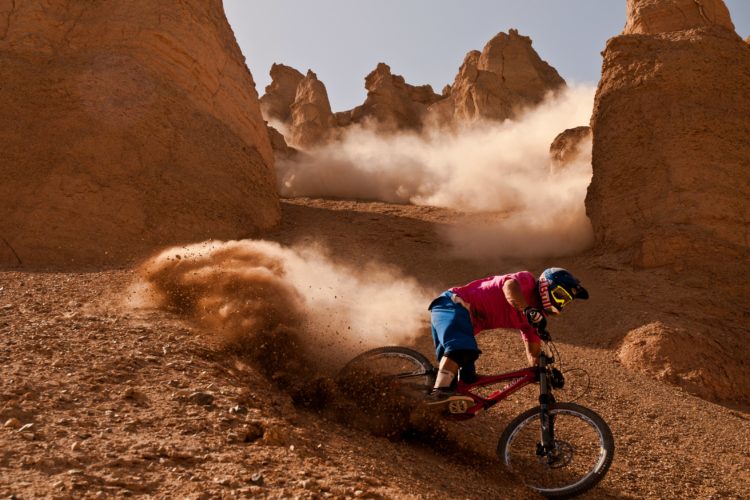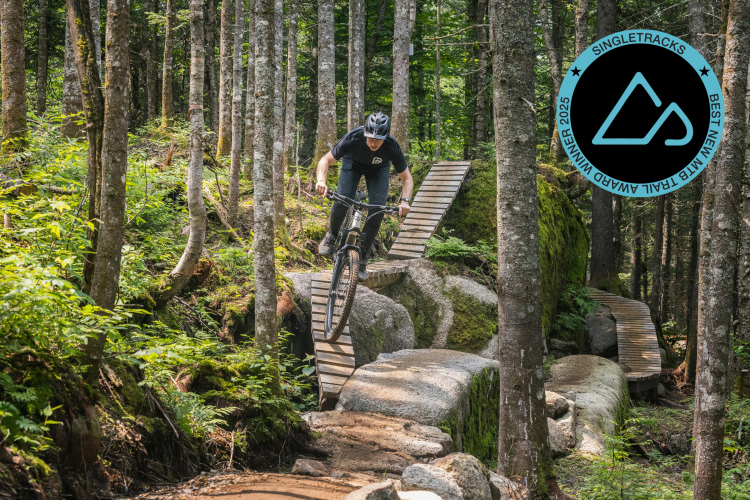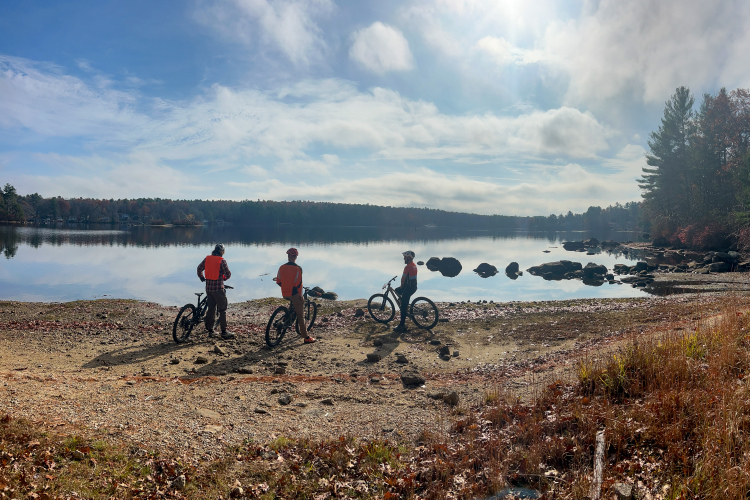Left-handed guitarists can’t follow the recommended rule to “play before you pay” because any shop they walk into will stock between zero and two guitars strung up to strum with the left hand. And likely none of those will be the exact axe that the musician is looking for. So lefties have to read as many reviews as possible to find the ideal sonic companion. Similarly, mountain bikers can’t often try new tires, suspension components, or even complete bikes before they buy, and we are left to trust the written and recorded reviews of independent journalists working with rad publications like this one.
We test heaps of gear here at Singletracks, and occasionally readers have questions about the how, why, and where of those assessments. In the interest of transparency, I wanted to share my side of that story here. I have been depending on gear reviews for my own purchases far longer than I’ve been writing them, and I take the testing and analysis process as seriously as any other article topic. The primary aim of our gear reviews is to create the largest library of reviews possible in order to help readers select the gear that’s right for their tastes and trails.
I’ll play the obvious intro-notes of this song with a few statements to simplify things. We don’t ever get paid to write reviews, and companies have no influence on what we write in review articles. They simply send us gear and we test and analyze it. To hit one other common query, we don’t sell the gear we test. The majority of products that I personally review are donated to a local youth cycling team, apart from the helmets that are far too large. Those mostly go to the parents.
To kick off the first verse on an open string, I’ll define who I think of while testing gear and writing reviews. Not long ago, I was working low-wage jobs, sometimes stringing a few gigs together to pay the bills. Saving up for a new set of tires was a budgetary move that included gobs of research across multiple MTB publications, and nerdy chats with friends. The tires had to be Goldilocks-good, as I would be stuck with them for a full season. My better-compensated friends would buy a new set of tires as soon as the tread started to look a bit worn. I try to consider mountain bikers who are living with all levels of economic strain and comfort, just as we work to consider riders of all skill levels with their varied interests and pursuits in the sport.
Knowing that my bike review might be the one that helps someone choose where to put their $2,000-12,000 of hard-earned scrilla is not a responsibility I take lightly. For this reason, my colleagues and I have learned to look past the hype, and determine what sort of trails and riders a piece of gear might fit best with. We want readers to have the best trail experience possible, and if the gear we’re reviewing causes hiccups in the fun meter, it’s our job to let y’all know. That’s not to say we don’t have preferences, as we certainly do, but we strive to put those aside and evaluate gear based on its stated intentions and real-world performance.
Reviews are intended to be a lasting resource that folks can trust for as long as a product exists. Not everyone who comes to the site daily needs to read a tire review, but when someone needs a new tire we hope that our rubber analysis can help folks choose the tread that’s right for them. We try to be as detailed as possible with reviews, covering every last thread of an item that the reader might care about, ad nauseam.

To stick with the tire example, the list of design elements we consider in a review includes grip in all directions, ease of mounting and tubeless capability, comparing marketing-copy to real-world functionality, durability, rolling resistance, profile, mud-shedding capability, optimal trail and weather conditions for the model, race vs. everyday trail usability, puncture protection, casing makeup, suppleness and support, cornering character, overall value with respect to the retail price, sealant and air pressure retention, comparison to similar tires, and any standout design features. For more technical gear, like suspension or frames, this list of variables is lengthened considerably.
How long do the notes ring? We test gear for as long as we need to answer all of the questions we could possibly have about it and any that readers might ask in the comments. For tires, that might be until the rear tread is worn out, while a set of brakes is often ready for review once the pads have been replaced a few times. We all keep ever-growing lists of the characteristics we want to focus on for each piece of gear, and reams of notes from our testing experiences. We type up the review once we can confidently share the full story.
I highly recommend cross-referencing our gear reviews with those on other sites, and from different media perspectives. Traditional MTB media outlets like ours will often have a different assessment of gear than social media influencers or sponsored athletes. Reading reviews on multiple sites and platforms can help to confirm if the product in question is right for you. One of the key strengths of our gear review style is that every MTB journalist has a mental library of the things they have tested. We can compare the previous ten test bikes to the current one, offering a method of analysis that sponsored riders and influencers often don’t have access to.
In addition to assessing gear and synthesizing our impressions in articles, we are able to communicate with the engineers who design it. This allows us to share the design process story, unearth the true nature of innovations that can become buried in marketing copy, and often to clarify the intentions of a specific piece of gear. To pluck that tire string one last time, if I notice that a tire isn’t shedding mud well, though it’s marketed as an “all-arounder,” I can contact the tread designer to inquire, and include their words in the review to give readers a better idea of the tread’s intentions. Armed with my “everyday mountain biker” assessment and the engineer’s stated intentions, readers should be well equipped to click buy or keep looking.
Finally, reviewing gear allows journalists to create hundreds of connections throughout the industry, leading to loads of intriguing stories that have nothing to do with products. For example, many of our suspension-tech pieces, race team spotlights, industry insider interviews, and even some trail-funding articles come from relationships that started with gear reviews.
To play all six strings at once, our aim with gear reviews is not to help companies sell products, as is sometimes asserted. Instead, it is to help fellow riders select the best gear for their needs. Gear that will enable and potentially inspire their next adventure.
















3 Comments
Feb 20, 2021
Occasionally a friend from overseas will message me when they realise that the article they're reading was written by me and I'm super stoked that they're reading it.
Feb 25, 2021
Instead of relying on opinions of riders that don't want/need the performance characteristics you do, ask people that you know that ride the same way. And consider the source there as well, as you will undoubtedly know a few fools on bikes.
Feb 19, 2021